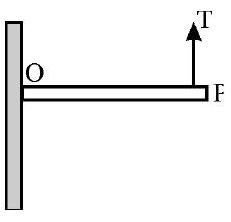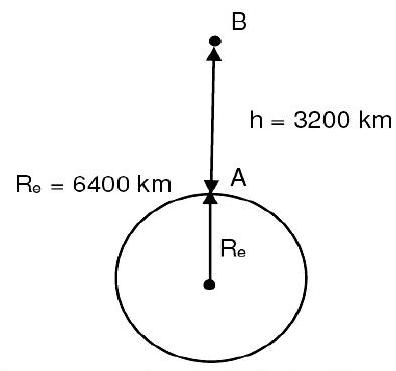138295
A uniform rod of length of $1 \mathrm{~m}$ and mass of 2 $\mathrm{kg}$ is attached to a side support at $\mathrm{O}$ as shown in the figure. The rod is at equilibrium due to upward force $T$ acting at $P$. Assume the acceleration due to gravity as $10 \mathrm{~m} / \mathrm{s}^{2}$. The value of $T$ is
138295
A uniform rod of length of $1 \mathrm{~m}$ and mass of 2 $\mathrm{kg}$ is attached to a side support at $\mathrm{O}$ as shown in the figure. The rod is at equilibrium due to upward force $T$ acting at $P$. Assume the acceleration due to gravity as $10 \mathrm{~m} / \mathrm{s}^{2}$. The value of $T$ is
138295
A uniform rod of length of $1 \mathrm{~m}$ and mass of 2 $\mathrm{kg}$ is attached to a side support at $\mathrm{O}$ as shown in the figure. The rod is at equilibrium due to upward force $T$ acting at $P$. Assume the acceleration due to gravity as $10 \mathrm{~m} / \mathrm{s}^{2}$. The value of $T$ is
138295
A uniform rod of length of $1 \mathrm{~m}$ and mass of 2 $\mathrm{kg}$ is attached to a side support at $\mathrm{O}$ as shown in the figure. The rod is at equilibrium due to upward force $T$ acting at $P$. Assume the acceleration due to gravity as $10 \mathrm{~m} / \mathrm{s}^{2}$. The value of $T$ is
138295
A uniform rod of length of $1 \mathrm{~m}$ and mass of 2 $\mathrm{kg}$ is attached to a side support at $\mathrm{O}$ as shown in the figure. The rod is at equilibrium due to upward force $T$ acting at $P$. Assume the acceleration due to gravity as $10 \mathrm{~m} / \mathrm{s}^{2}$. The value of $T$ is
